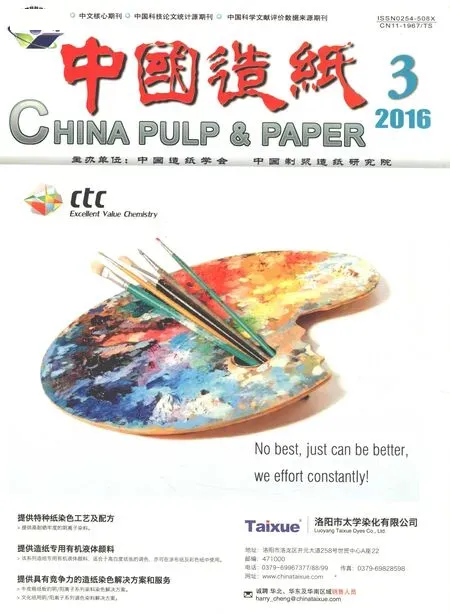APPITA 2015年第2期中英文摘要
Mapping and modelling of optical properties from pulp to super calendered paper
SOFIA ENBERG ∅IVIND OPDAL PATRIK AXELSSON ∅YVIND ERIKSEN MATS RUNDLÖF MAGNUS PAULSSON
SUMMARY: During production of mechanical pulp based paper, the pulp darkens within the process which represents a significant cost for the mill. A mapping of the optical properties of the pulp was conducted along the process, from pulp mill to paper machine, at a mill producing super calendered (SC) paper on three paper machines. The focus was to evaluate at which positions in the mill the discolouration occurs and also which fraction of the pulp darkens the most.
The fine fraction of the pulp darkened more than the long fibre fraction. Bleached pulp diluted with white water from the paper machine darkened more during storage than pulp diluted with clear filtrate. The white water contains a considerable amount of suspended solids, i.e. pulp fines and clay. There was a tendency for a shoulder in absorption spectra of the pulp stored in white water from the paper machine in the region 550 to 650 nm, both for fibres and fines. This is in the same region where the added dyes have their absorption maxima and also some complexes between iron and some of the components among lignin and the extractives. Simulation of retention times of different fractions showed that, although the main part of the fine material is retained in the paper within a few hours, a small part might circulate for considerably longer time.






